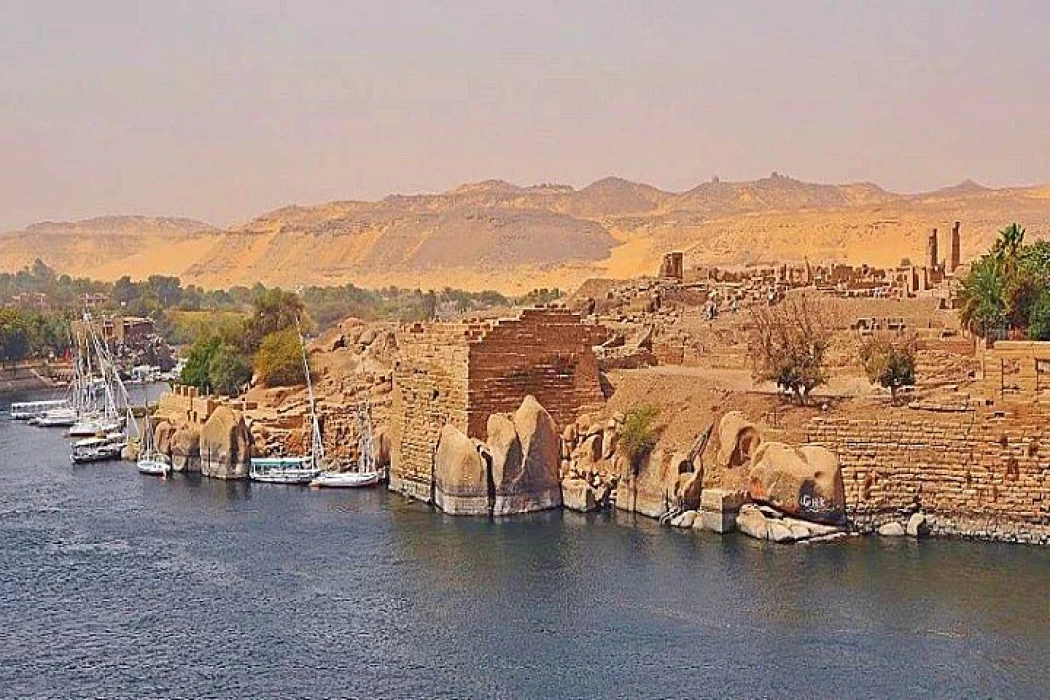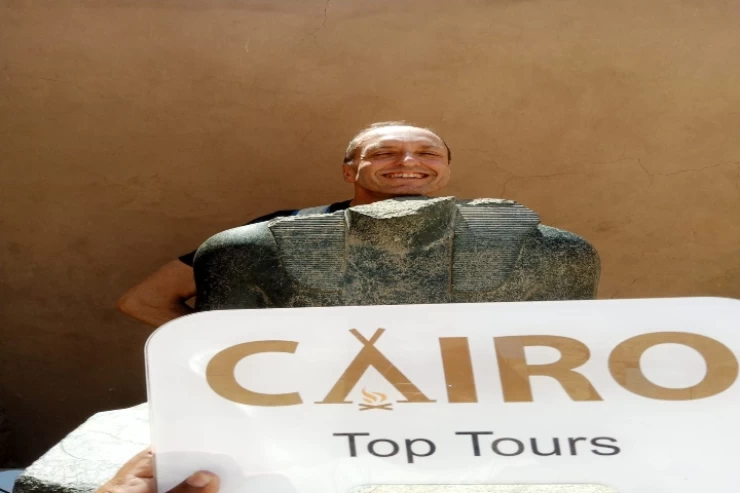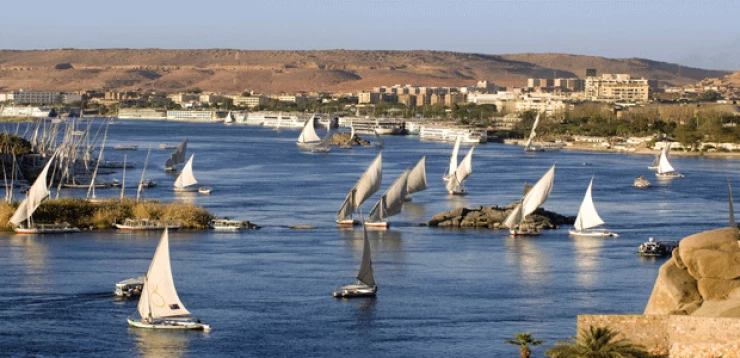
Elephantine Island: Temples, Nile Scale, and the Aswan Antiquities Museum
The island is famous for temples dating back to different eras, the most important of which is the “Satet” temple, which is considered one of the most important idols of the island, as there is an early temple for it from the era of the First and Second Dynasties, a temple from the era of the Sixth Dynasty, a temple from the era of King “Senusret I” from the Middle Kingdom, and a temple from the era of Queen Hatshepsut from the era of the New Kingdom.
There is also a Ptolemaic-era Satet temple, and Khnum temples from the Middle, New, Ptolemaic and Early Roman eras.
The island is famous for a cabin known as “Haqaib,” who was one of the most important rulers of the city during the Sixth Dynasty around 2200 B.C. The cabin includes statues of Haqaib, Sarnbut I and other rulers and princes of Aswan during that era.
The Kalabsha cabin, located at the southern end of the island, was dedicated to Mandolis and was built during the reign of the Meroitic king Argamenes.
The “Nile Scale” is located on the eastern side of the island and dates back to the Ptolemaic era, and it is designed by stone steps that descend directly to the Nile River, you can book Nile Cruise through Egypt Nile Cruise ,and on the left and right of the stairs, various signs and numbers can be observed that go back to Greek and Arabic, as this scale was renovated during the reign of Khedive Ismail as written on the left wall, and the “Nile Scale” was used to calculate the increase and decrease of the Nile flood.
As for the Aswan Antiquities Museum, which was built in 1898 as an administrative residence for one of the engineers of the Aswan Reservoir, then it was converted into the Aswan Antiquities Museum in 1917,you can visit the museum by visiting Egypt Day Tours, and houses antiquities discovered in Aswan Governorate, Nubia and Elephantine Island from various ancient Egyptian eras as well as from the Ptolemaic, Roman and Islamic eras.
















